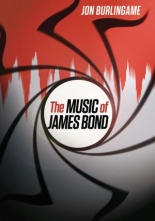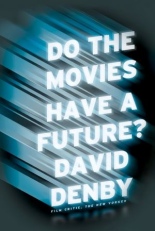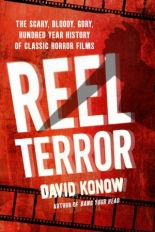
 What makes Skyfall, the new James Bond film, all the more terrific is that its theme song is, too. That hasn’t happened in, what, decades?
What makes Skyfall, the new James Bond film, all the more terrific is that its theme song is, too. That hasn’t happened in, what, decades?
I’ve long thought that the 007 franchise producers have grown to be behind the times in selecting artists to do the theme, grabbing them well after their flame has burned brightest. As a result, the songs simply don’t chart anymore. This time, with Adele fresh off two arms full of Grammys, the tide will have reversed.
That’s a story I’m sure we’ll see covered in the next edition of Jon Burlingame’s The Music of James Bond. Until then, this does just fine as is.
Coming from Oxford University Press, the handsome hardback tells not only how each and every 007 main theme came to be, but how its overall soundtracks — and accompanying albums — were assembled and shaped. Broken into chapters movie by movie, logically enough, the renowned music critic Burlingame covers the entire canon, both official and not; therefore, the stories behind Michel Legand’s Never Say Never Again score nor Burt Bacharach’s wonderful Casino Royale ’67 melodies don’t go untold.
Who knew there was anything to reveal? While the “true authorship” debate between Monte Norman and John Barry over the series iconic, indelible, immortal main theme has been covered elsewhere, I don’t recall it being done so at this depth, this lively, and with something that at least approaches a modicum of suspense. Same goes for the tale of Barry’s battles in studio with Duran Duran for the A View to a Kill theme, which turned out to be the biggest Billboard hit of all.
While it’s interesting to read how the likes of Paul McCartney and Carly Simon came aboard, Burlingame also reveals stories of the Bond themes that never were. Among others, you’ll learn about Kate Bush almost breathed her way through Moonraker‘s credits, and how Eric Clapton jammed in a Licence to Kill track that was scrapped.
The author also briefly discusses David Arnold’s excellent Shaken and Stirred electronica tribute album of 1997, which helped him become Barry’s heir apparent to the franchise, and notes other 007 collections of interest. Sidebars in each chapter review the score highlights, time-coded to their appearance in the films.
Illustrated with a wealth of archival photos and original album covers, The Music of James Bond is as much fun to look at as it is to read. If that Skyfall isn’t covered is the only negative I can find — OK, second, because I wished Moby’s remix of the 007 main theme for Tomorrow Never Dies merited more than a mention — I can recommend it strongly to the series’ legion of fanatics. Dare I say it? Nobody does it better. —Rod Lott


